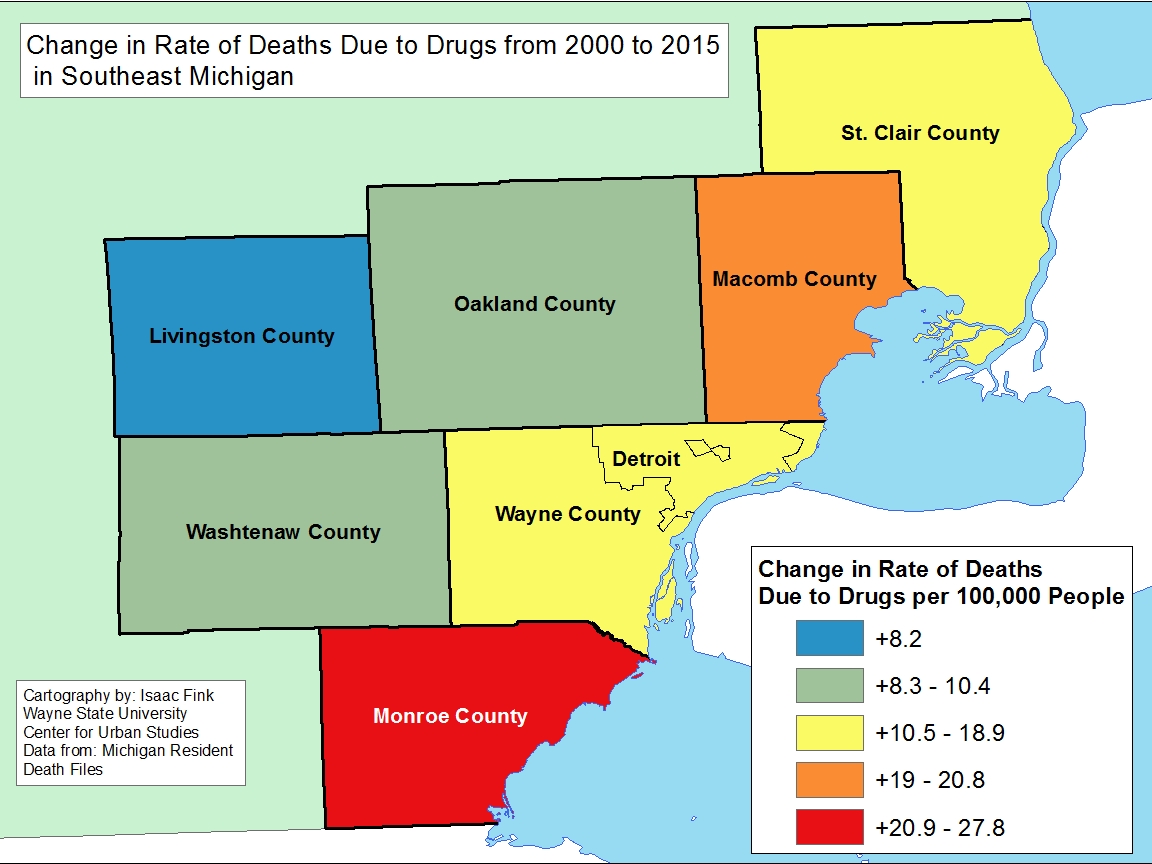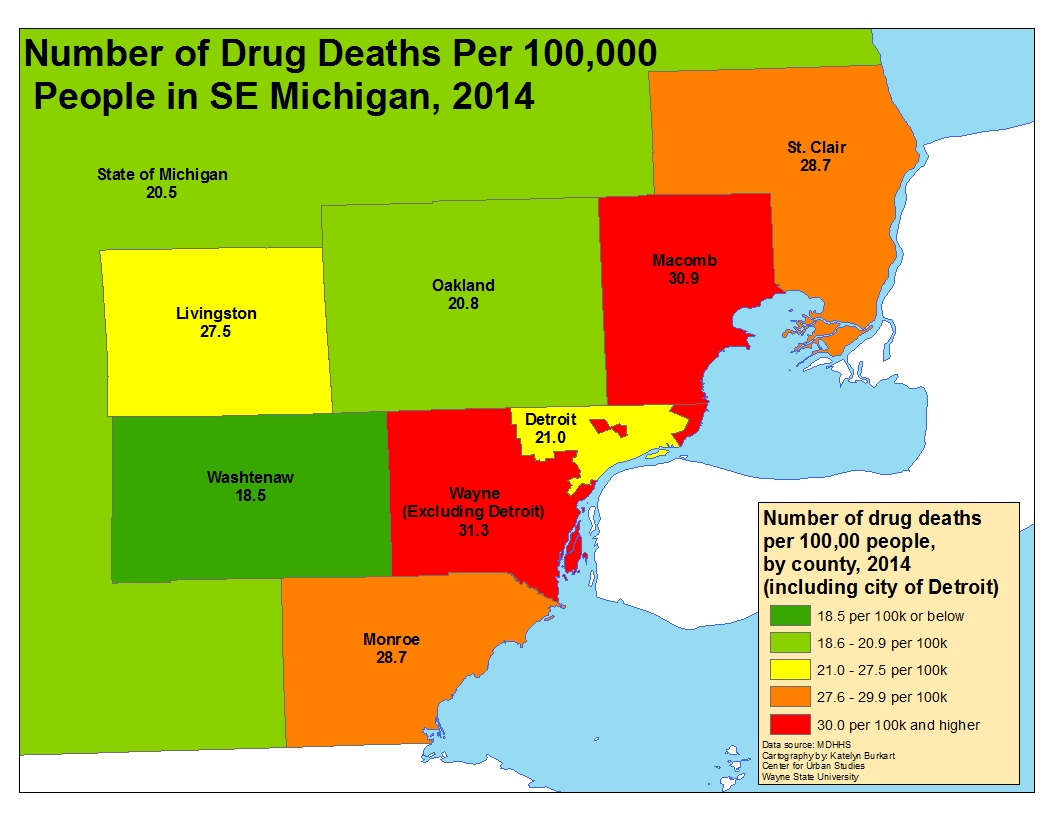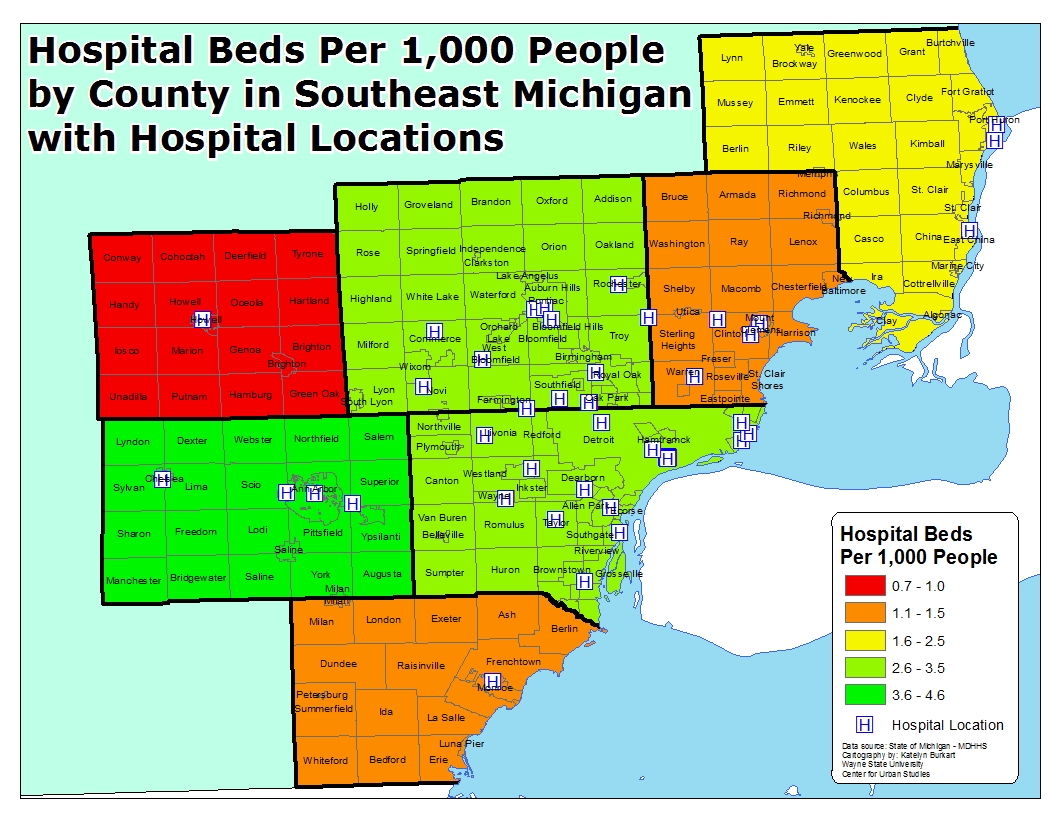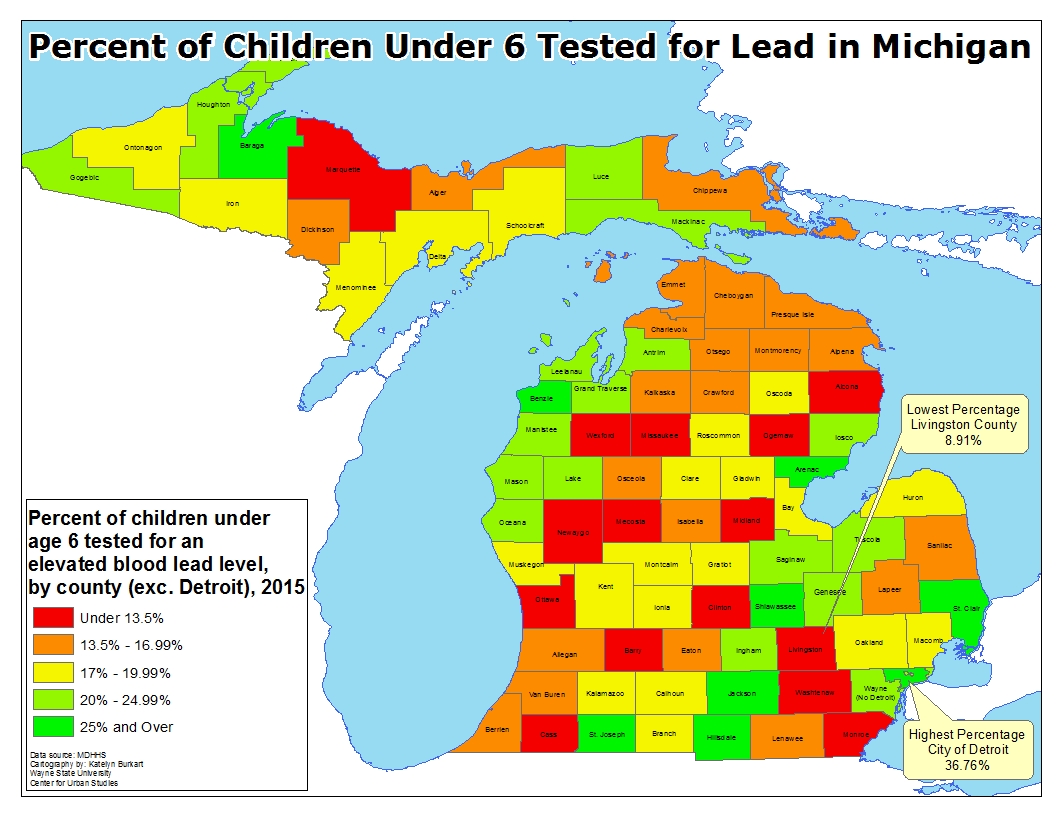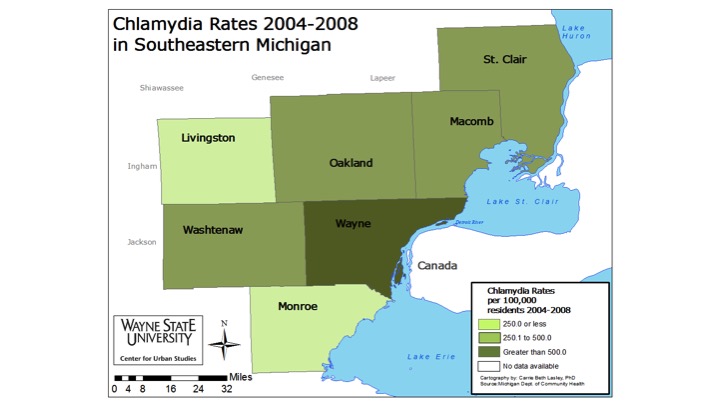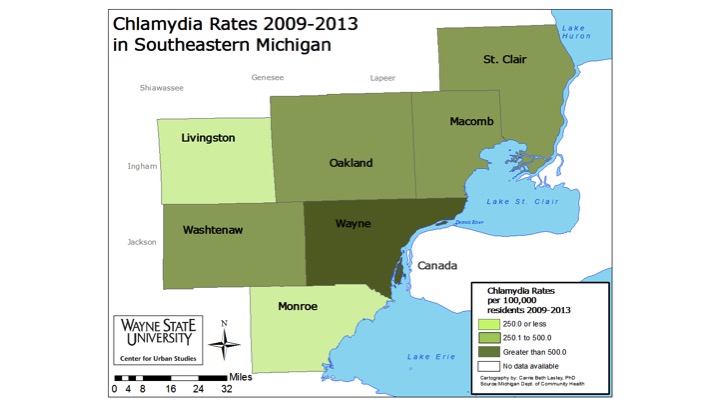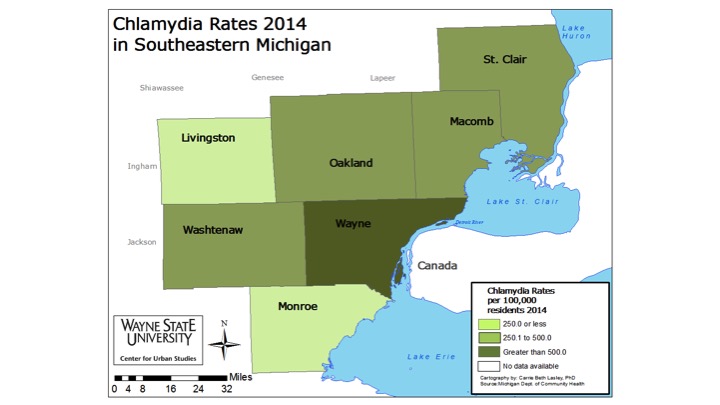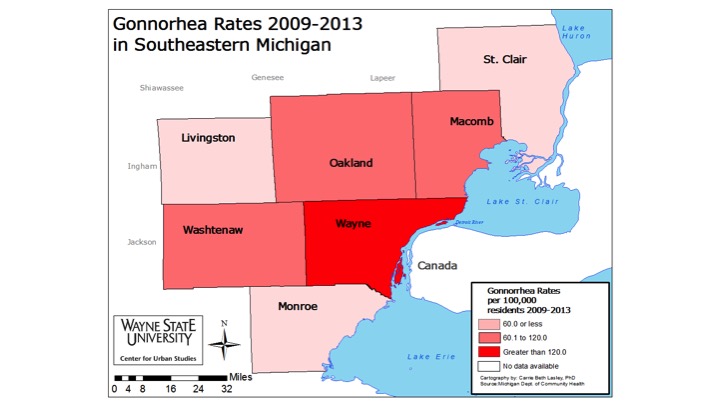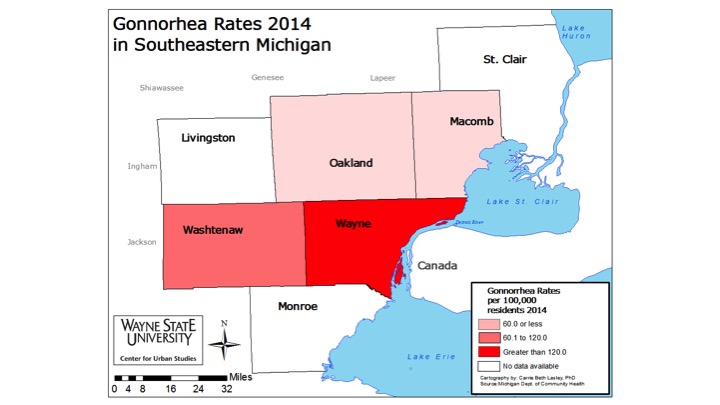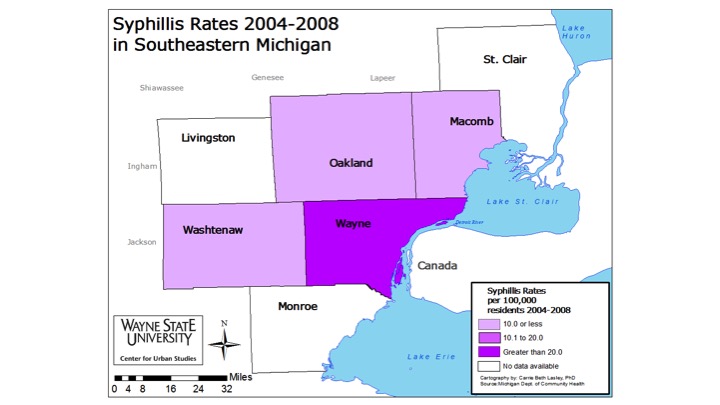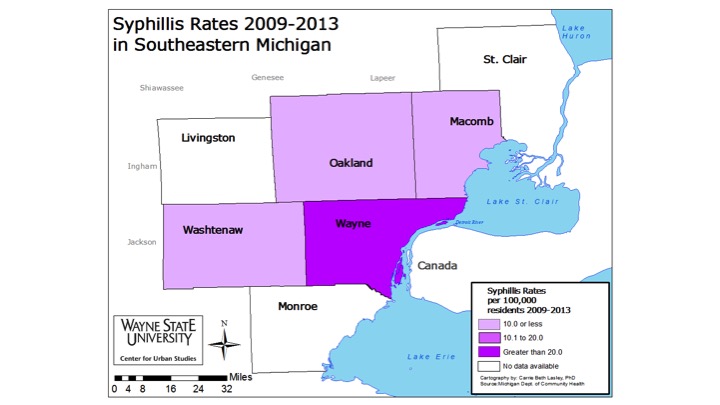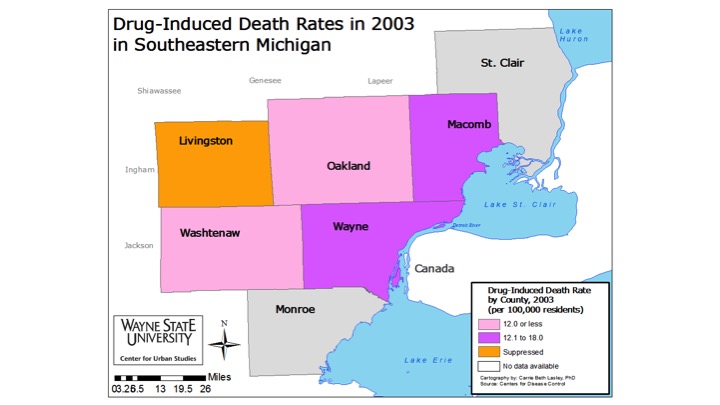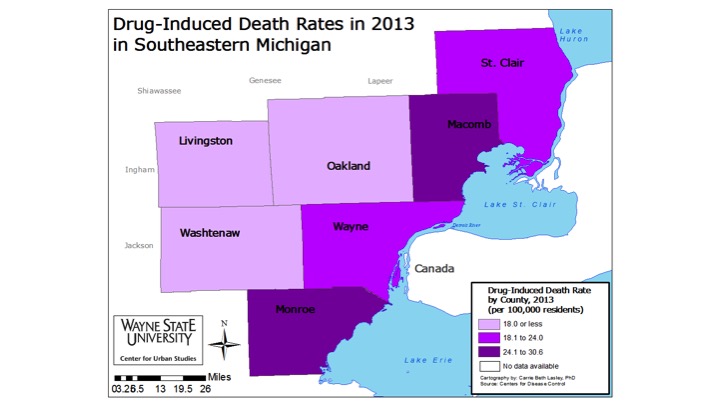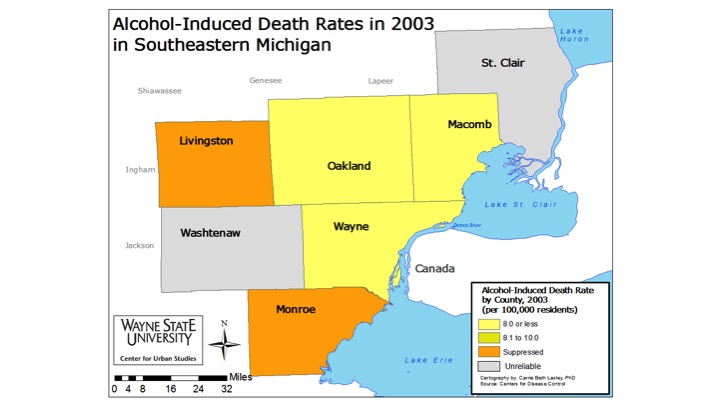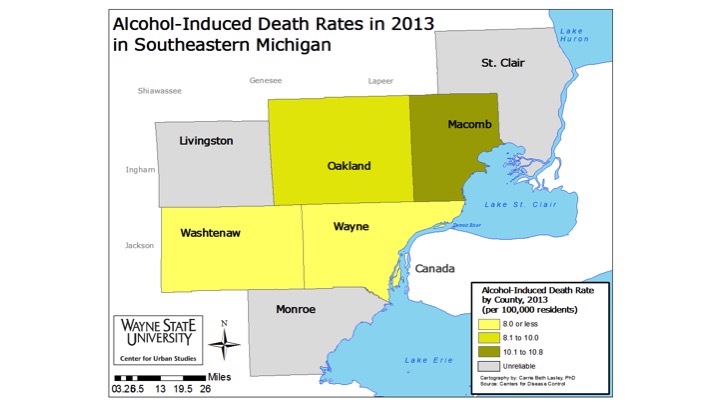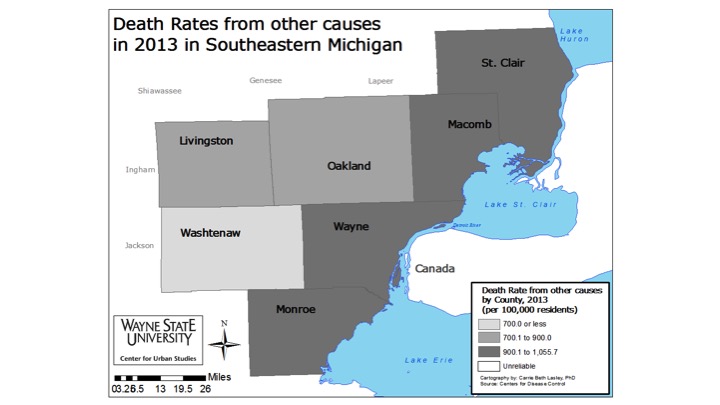Lead poisoning has long been a serious problem for Detroit’s children, producing a lifetime of reduced cognitive capacity and many other consequences. In 1998, 17,015 Detroit children under 6 years old were lead poisoned at or above the 5 micrograms of lead per deciliter of blood (ug/dl) level. For over a decade lead poisoning has been declining yeay-by-year, but in 2016, the number rose by over 400 children to 2,073 (Figure 1). This was over 27 percent increase in one year (Figure 3).
It is likely that the proximal cause of this rise was an increase in testing of children. As shown below (Figure 2), testing had been declining in Detroit in recent years through 2015. In 2016, testing of children shot up by 9.5 percent (Figure 3). Over 2,000 more children were tested during this time. This was for two clear reasons. First, the Flint crisis surrounding lead in drinking water triggered more parents to have their children tested. Second, the City of Detroit, emerging from bankruptcy, was rebuilding its Health Department, and that agency began to actively test for lead and to encourage others to do so as well.
While, the percentage of children with lead poisoning has recently increased, the numbers are not evenly distributed across Detroit (Figure 4 below). Rather, children with lead poisoning are concentrated in zip codes where there are many older houses, mostly built well before the 1940s when lead paint was used frequently in homes. Second, these zip codes have low medium incomes (recall that poverty has increased in Detroit), and residents cannot afford to maintain their homes or landlords choose not to do so. Third, there are still many children in these zip codes.
So, many children are exposed to fraying homes where lead paint was heavily used historically. In one of these zip codes, 48214, preliminary data from a sample of over 500 homes indicates that as many as 87.9 percent of the homes assessed have some lead present on windows, walls, floors or porches. In this same zip code, tests show that about 17 percent of children have lead poisoning. The zip code with the highest percentage of children with lead poisoning is 48206 at 22.3 percent.
So, what can be done? Three important strategies are being executed by the City and others.
- First, the Health Department attempts to case manage lead poisoned children, making sure that their home gets assessed and parents are trained to protect the child. Early intervention may reduce the long term effects of poisoning.
- Second, where feasible, the homes of these children are referred for lead abatement, a procedure where lead hazards are removed from the home using public dollars, where the household cannot afford to pay. This can be very expensive, ranging from $5,000 to over $20,000. Still this costs a lot less than the lifetime cost of lead poisoning for a child.
- Third, the City recently passed amendments to its property maintenance code that requires landlords to remove lead hazards from homes that they rent. In effect, this requires them to remove lead hazards. The City will be ramping this strategy up over the next few years, and this is expected to help the over 50 percent of Detroit residents who now rent.
Two more strategies are emerging as well:
- First, ClearCorps and The Wayne State Center for Urban Studies are piloting an effort to identify homes with lead where children reside. Through this process an abatement of early lead hazards will take place, removing the hazard of a child being lead poisoned. The challenge for this approach is whether enough abatement funds and contractors to do the work can be made available for these homes.
- Second, another possibility is to help families, who might choose to do so, to relocate to areas where homes have little or no lead paint. As Figure 4 above shows, several of the northern and western zip codes of Detroit have relatively low levels of lead poisoning of children. Figure 5, below, shows the percentage of tested children identified as lead poisoned for all of Wayne County. Figure 6 shows Oakland County. Figure 7 shows Macomb County. Many of these zip codes have no reported lead poisoning cases, but some of the housing may be prohibitively expensive for current Detroit residents.










